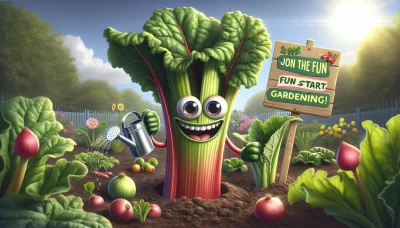What does a quince taste like Quiz
Test Your Knowledge
Question of
What Does a Quince Taste Like?
In the realm of gardening and cultivating home-grown fruits, the quince holds a unique place. This fruit, often overshadowed by its more common cousins like apples and pears, intrigues many with its distinctive flavor profile. The interest in what a quince tastes like stems from its rarity in typical grocery stores and its celebrated status in various culinary traditions around the world. Gardeners and fruit enthusiasts are drawn to the challenge of growing quinces, not only for the beauty of the trees and the aromatic blossoms but also for the reward of tasting this unique fruit directly from their own backyard.
Understanding Quince: A Gardener's Perspective
Quince is a unique fruit that belongs to the Rosaceae family, which includes apples and pears. Its origin can be traced back to the regions of Southwest Asia, specifically in the area between Turkey and Iran, where it has been cultivated for over 4,000 years. Quince is known for its bright yellow skin, fragrant aroma, and pear-like shape. Despite its hard, sour flesh when raw, quince transforms into a soft, sweet, and flavorful treat when cooked, making it a popular ingredient in jams, jellies, and desserts. Among gardeners, quince holds a special place due to its beautiful blossoms, resilience, and the unique flavor it adds to culinary creations. Its growing popularity can be attributed to its low maintenance requirements and the ornamental beauty it adds to gardens, making it a cherished addition for those looking to diversify their home-grown produce.
The Unique Taste of Quince
The quince is a fruit that offers a unique taste experience, distinct from other fruits. Fresh quince has a floral and slightly tart flavor, reminiscent of a blend between a pear and an apple, yet with its own unique twist. Its firm, grainy texture is quite astringent and not typically enjoyed raw by many. However, when cooked, the quince transforms completely. The cooking process softens the fruit, reducing its tartness and enhancing its sweetness, resulting in a flavor that is both rich and subtly perfumed. This remarkable transformation makes quince a favored ingredient in jellies, jams, and desserts, where its unique taste can truly shine.
Growing Quince in Your Garden
- Soil Type: Well-drained, fertile soil with a pH of 6.0 to 7.0.
- Climate: Prefers a temperate climate, with cold winters and hot, sunny summers.
- Water Requirements: Regular watering is necessary, especially during dry periods, but avoid waterlogging.
Harvesting and Preparing Quince
Quince should be harvested when fully grown but still hard. Typically, this occurs in late autumn, just before the first frost. The fruit will be a deep yellow and emit a fragrant aroma when it's ready to be picked. It's important to handle them with care to avoid bruising. After harvesting, quince requires a period of storage to become softer and more flavorful. This can take several weeks in a cool, dark place.
Preparation Methods
- Peeling and Coring: Start by peeling the quince and removing its core, as the skin can be quite tough and the core is hard.
- Poaching: Slowly cooking quince in a sweet syrup softens the fruit and enhances its natural flavors.
- Baking: Baking quince with a sprinkle of sugar can concentrate its flavors and create a delicious dessert.
- Preserving: Quince can be made into jams, jellies, or marmalades, which are perfect for spreading on toast or incorporating into pastries.
Quince Recipes for the Home Gardener
| Recipe Name | Key Ingredients | Cooking Time |
|---|---|---|
| Quince Jelly | Quinces, sugar, water, lemon juice | 2 hours |
| Quince Paste | Quinces, sugar, lemon juice | 4 hours |
| Quince Tarte Tatin | Quinces, puff pastry, butter, sugar | 1 hour 15 minutes |
| Poached Quince | Quinces, sugar, vanilla pod, cinnamon stick, lemon zest | 45 minutes |
| Quince and Apple Crumble | Quinces, apples, flour, butter, sugar, cinnamon | 1 hour |
The Health Benefits of Quince
Quince, a unique fruit that belongs to the same family as apples and pears, offers a wealth of health benefits, especially for those who grow and consume their own produce. This fruit is not only a rich source of dietary fiber, which aids in digestion and promotes a healthy gut, but it also contains a variety of vitamins and minerals essential for overall health. Vitamins such as Vitamin C, found abundantly in quince, play a crucial role in boosting the immune system, while minerals like potassium help in maintaining heart health. Additionally, the antioxidant properties of quince contribute to fighting off free radicals, reducing inflammation, and potentially lowering the risk of various diseases. For gardeners and home growers, incorporating quince into their diet means enjoying these nutritional benefits while reaping the rewards of their own labor and dedication to sustainable living.












